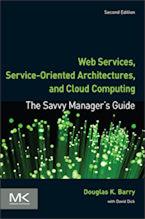Stand-Alone Architecture
If you are using C++ or Java in a stand-alone application and have the need for a database that provides high performance on complex data, it is difficult to beat an ODBMS. The reason is two-fold:
- With an ODBMS, you have only one model to manage -- the model that your object programming language uses. See the diagram below, which shows the same model being used in the database and the application. There is also no need to program any mapping between the data in the database and the data in the application.
- An ODBMS gives you excellent performance on object models. This means either you can get extreme performance on complex data or you can use less expensive hardware than you might need with a relational DBMS, for example.

- Websites that do not use any existing data
- Programming tools
- Design tools
- Multimedia tools
- Catalogs on CD
- Embedded applications in general
Also see when an ODBMS should be used.
If you have existing data sources or want to keep data in a relational DBMS, see the architecture with existing data sources.
Context for Stand-Alone Architecture
Related Articles for Stand-Alone Architecture
Author
Douglas K Barry
Principal
You may use this material for your work or classes. Reprint Policy. Be sure to check the menu at the left for other articles available on this site.
The Savvy Manager's Guide
Douglas K Barry is also the author of a book that explains Web Services, service-oriented architecture, and Cloud Computing in an easy-to-understand, non-technical manner.
Web Services, Service-Oriented Architectures, and Cloud Computing: The Savvy Manager's Guide (Second Edition)
by Douglas K Barry with David Dick
This is a guide for the savvy manager who wants to capitalize on the wave of change that is occurring with Web Services, service-oriented architecture, and—more recently—Cloud Computing. The changes wrought by these technologies will require both a basic grasp of the technologies and an effective way to deal with how these changes will affect the people who build and use the systems in our organizations. This book covers both issues. Managers at all levels of all organizations must be aware of both the changes that we are now seeing and ways to deal with issues created by those changes.

